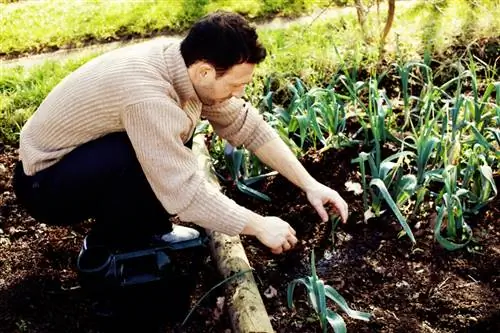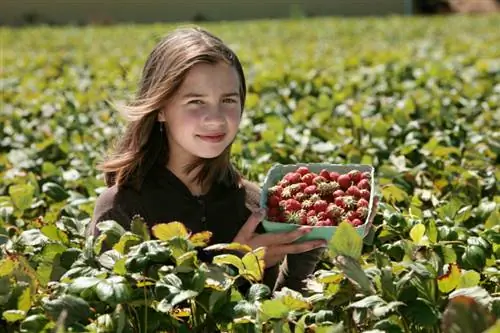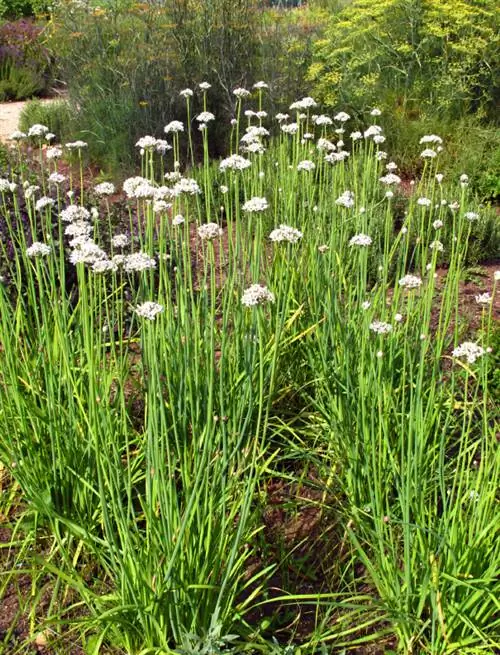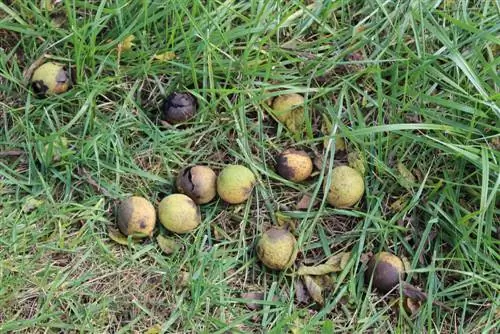- Author admin [email protected].
- Public 2023-12-16 16:46.
- Last modified 2025-01-23 11:21.
Walnuts are delicious sources of energy. Anyone who is lucky enough to have a he althy and strong walnut tree in their own garden can look forward to rich harvests over the years. This article provides you with all the important information on how to harvest walnuts correctly.

When and how do you harvest walnuts correctly?
The walnut harvest begins at the end of September, when the nuts have a green-brown and cracked shell. Wait for them to fall from the tree on their own or come down with a gentle shake, and collect them regularly to avoid pests.
Fruits possible from the second year
Don't expect to be able to harvest walnuts the first year after planting your walnut tree. However, from the second year onwards, a carefully cared for tree has a good chance of producing strong fruit.
When does the harvest season for the walnut tree begin?
The walnut harvest season begins at the end of September. It is very easy to recognize ripe fruits: they have a green-brown and cracked skin.
Note: When the walnuts are ripe (have developed their full flavor), they fall from the tree on their own or by gently shaking them.
Instructions: How to harvest walnuts correctly
While special shaking and sweeping machines usually harvest the walnuts in commercial cultivation, you have to do this task manually in your garden.
Important: You do not need a ladder to harvest the walnuts. A landing net (€25.00 on Amazon) with an extendable telescopic handle is also unnecessary.
In general, you should avoid breaking off the walnuts. This would only cause damage to the tree shoots and affect next year's harvest.
In short: It's best to wait until the fruit has fallen down on its own. Then all you have to do is collect them. So you save the nuts rather than harvest them. Gently shaking the tree is permitted to force the tree to fall.
- Mow the grass around the walnut tree in time. Otherwise you may have to look for the walnuts in high stalks (unnecessary effort).
- Collect fallen, ripe walnuts regularly. On rainy days, you should be particularly diligent and check the situation both in the morning and in the afternoon.
- Do not store walnuts with black coloring.
- Wear rubber gloves when harvesting the fruit.
Additional tips for harvesting walnuts
- The constant collection of fruits primarily serves to keep uninvited guests away from the tree. If you leave the nuts lying around, they provide an ideal breeding ground for parasites and other pests (they multiply quickly).
- Also pick up and discard any damaged walnuts (for the same reason as above). Only rotten/stained nuts are suitable for compost, while those with caterpillars should be put in the organic waste bin (to avoid the spread of voracious insects to other types of fruit).
- It's not just us humans who love walnuts, squirrels and mice also really appreciate the nuts. Treat the animals to some nuts when you have a rich harvest.
- To preserve walnuts and store them for a longer period of time, you must dry the fruits in a warm, dark room immediately after harvesting.






